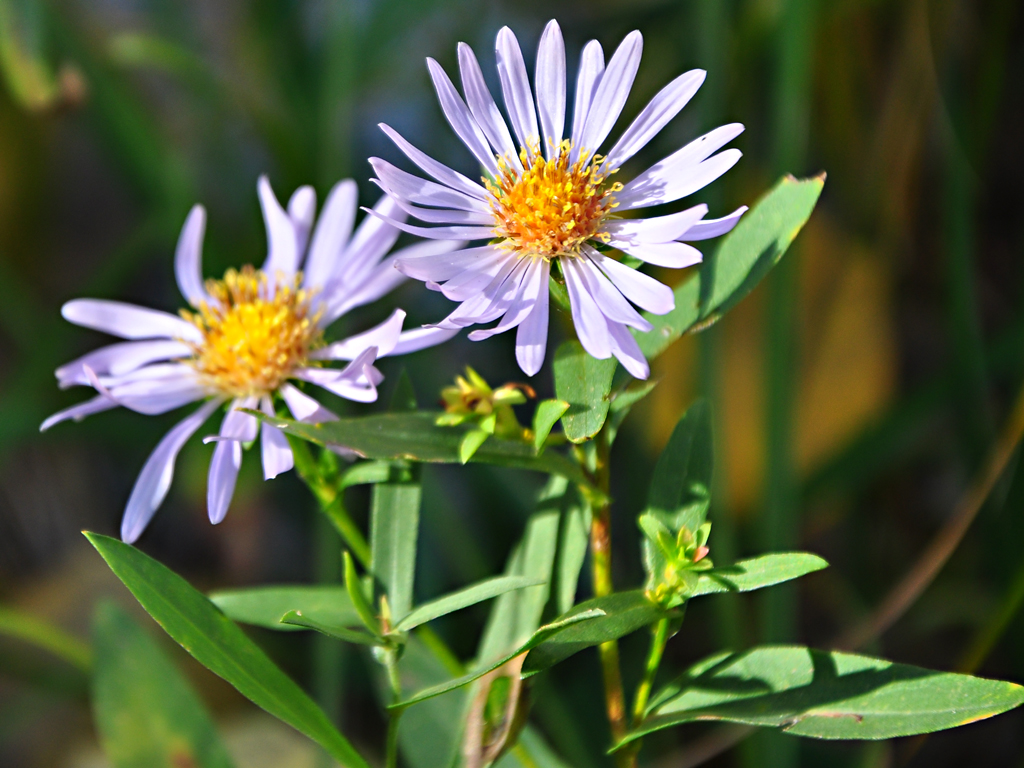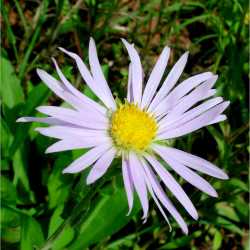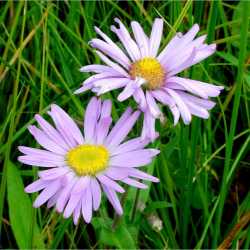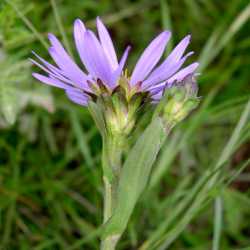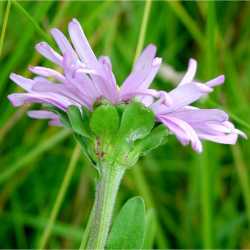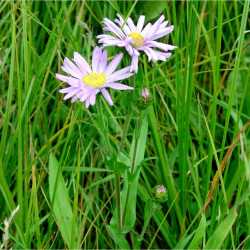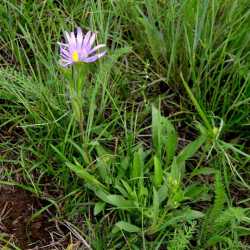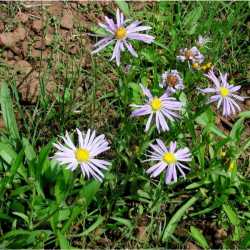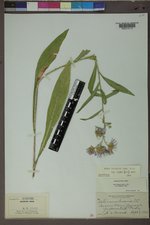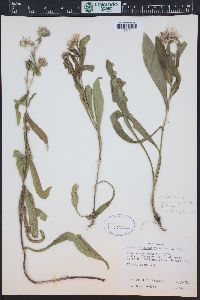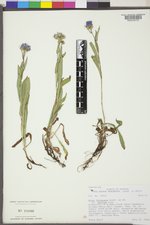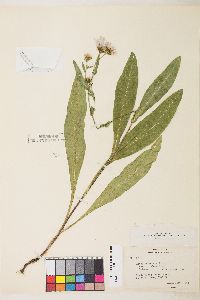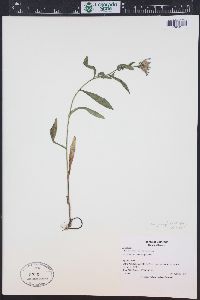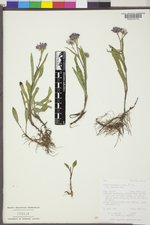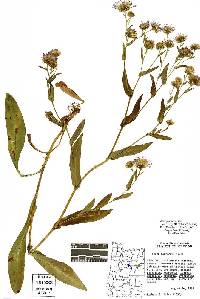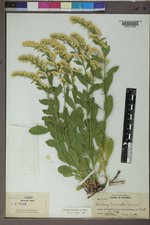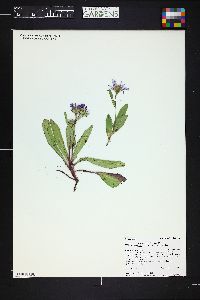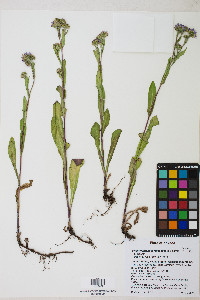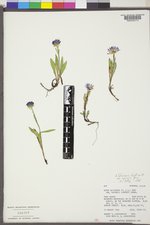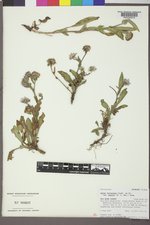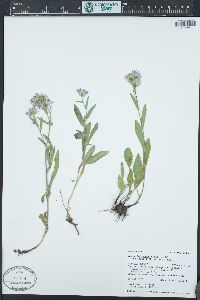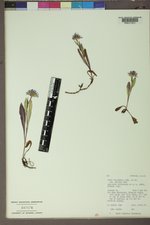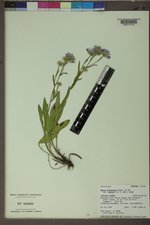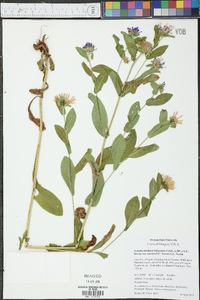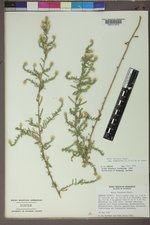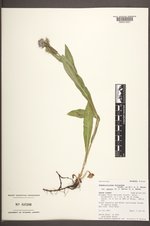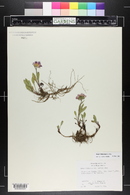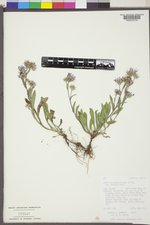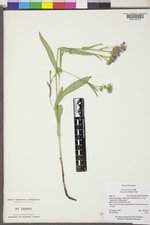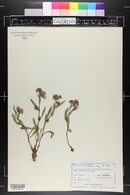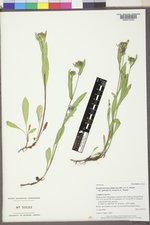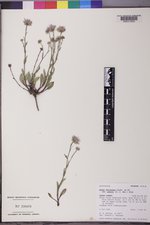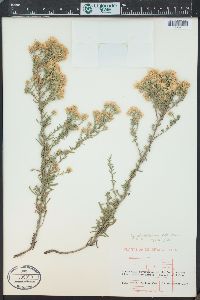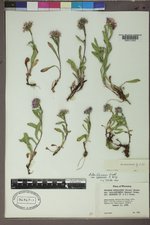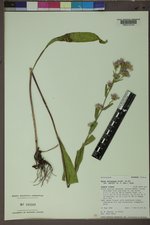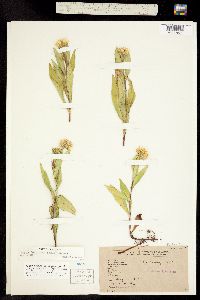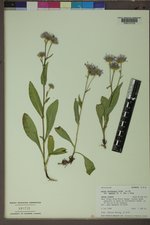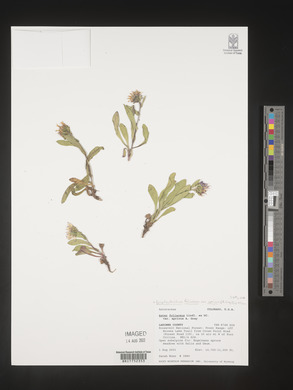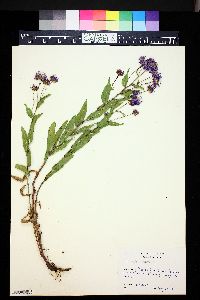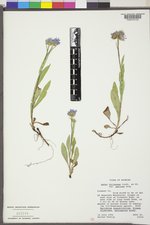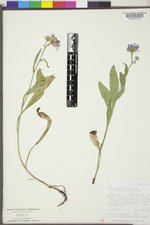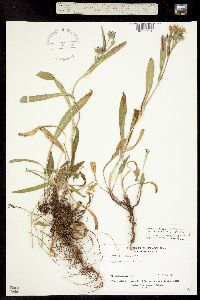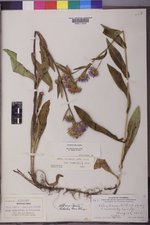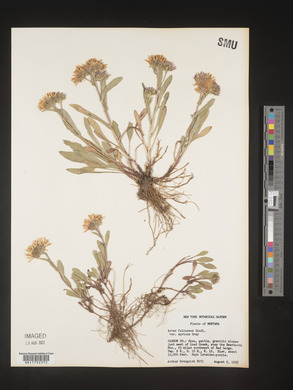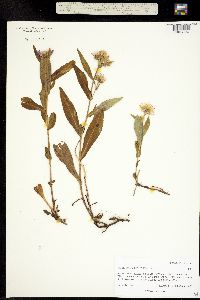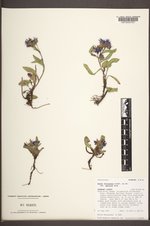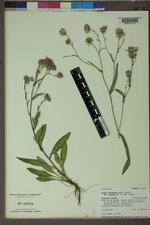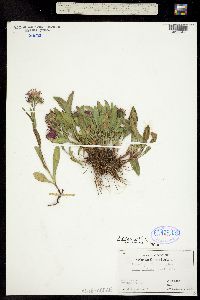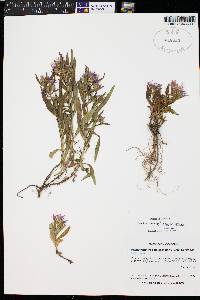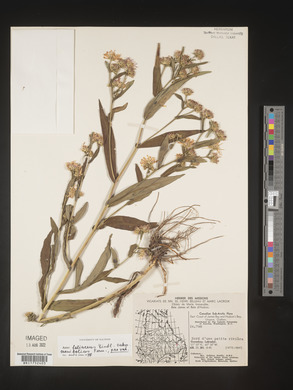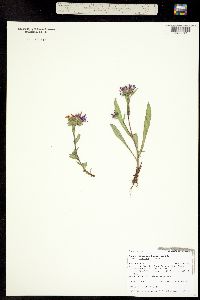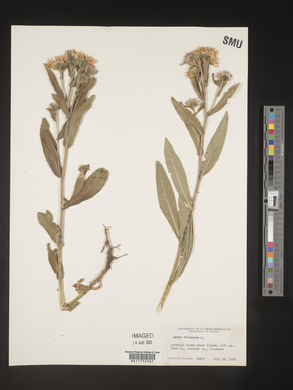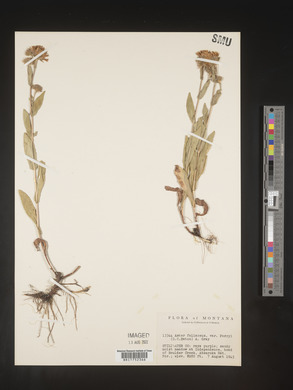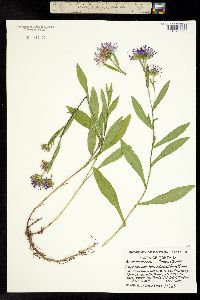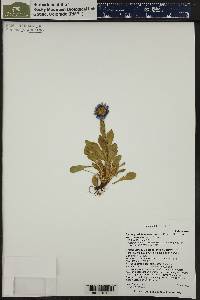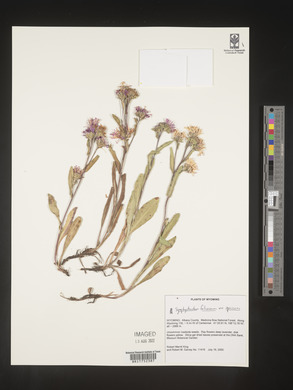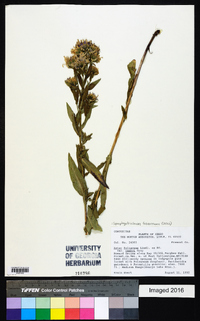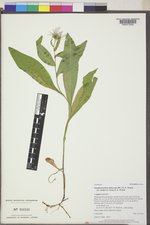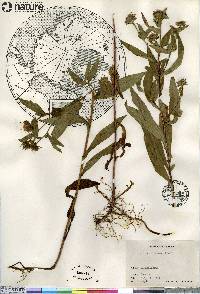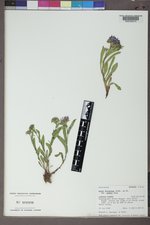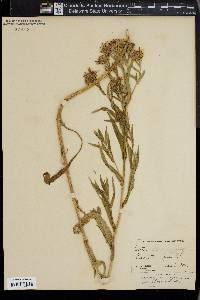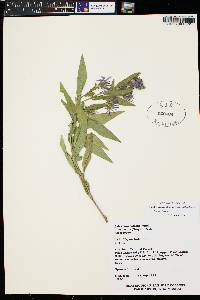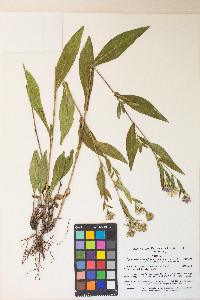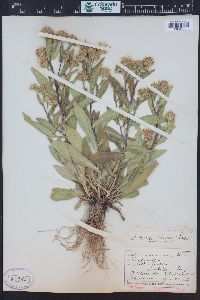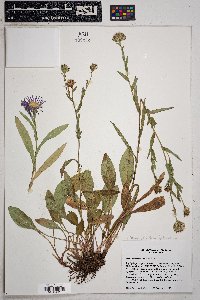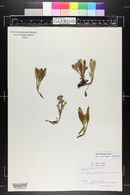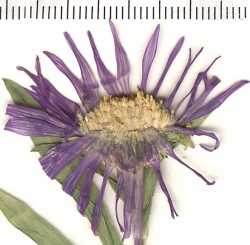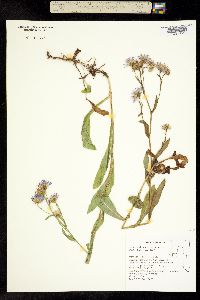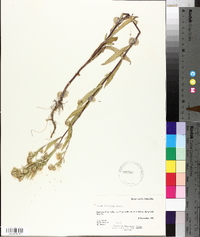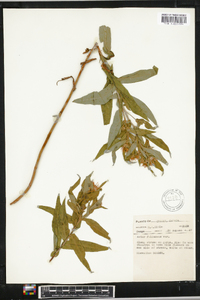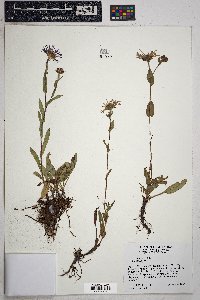
|
|
|
|
Family: Asteraceae
Alpine Leafy-Head American-Aster, more...alpine leafybract aster
|
Perennials 10-60 cm, colonial; long-rhizomatous. Stems 1-5+, ascending to erect, glabrous or sparsely puberulent. Leaves thin, margins entire or sometimes serrate, apices acute to obtuse, faces usually glabrous, sometimes sparsely hairy; basal usually persistent, petiolate to subpetiolate, blades broadly elliptic to obovate, 30-200 × 8-25(-30) mm, bases attenuate, margins entire or sometimes serrate, apices acute to obtuse; proximal cauline sessile or subpetiolate, blades elliptic to obovate, 35-120 × 8-25 mm, bases attenuate or cuneate to rounded, sometimes ± clasping, apices acute; distal sessile, reduced distally, bases cuneate, apices acute. Heads borne singly or in paniculiform arrays, branches ascending, up to 25 cm. Peduncles sparsely hairy, bracts 0-3, lanceolate. Involucres campanulate, 6-16(-20) mm. Phyllaries in 4-6 series, oblanceolate or oblong (outer) to lanceolate or linear (inner), subequal or unequal (outer exceeding inner), bases outer foliaceous, inner indurate, margins entire, green zones elliptic to lanceolate , apices acute to rounded, faces glabrous or puberulent. Ray florets 15-60; corollas violet to purple, laminae 8-18(-20) × 1-2 mm. Disc florets 50-150; corollas yellow, 4-7 mm, lobes triangular, 0.4-1 mm. Cypselae brown, cylindric to obovoid, not compressed, 2.5-4 mm, 3-4-nerved, faces hairy; pappi white to tawny, 5-8 mm. Symphyotrichum foliaceum is extremely variable and is widespread in western montane coniferous forests and subalpine meadows.
General: Perennial, 10-60 cm tall, highly variable in size, colonial; stems 1-5 or more, ascending to erect, glabrous to sparsely puberulent; rhizomes long, creeping. Leaves: Basal (usually persistent) and cauline, alternate, oblanceolate or elliptic to obovate, 3-20 cm long, 8-25 mm wide, reduced upwards, usually glabrous, sometimes sparsely pubescent, margins entire to sometimes sharply toothed; basal and lower cauline blades petiolate to nearly sessile, upper cauline blades sessile, often clasping at the base. Flowers: Heads 10-200 or more, borne in raceme-like to panicle- like arrays; involucre campanulate, 5-8 mm long, 7-9.5 mm wide; phyllaries numerous in 3-4 series, the outer oblanceolate-spatulate, the inner linear-lanceolate, sparsely to densely strigose; ray flowers mostly 20-35, 8-30 mm long, usually white, sometimes blue or pink; disk flowers 18-30, 2-2.5 mm long, yellow; flowers August- October. Fruits: Achene, 2.5-4 mm long, cylindric to obovoid, 3-4 veined, brown, pubescent; pappus of 25-40 minutely barbed bristles, 5-8 mm long, white to tan. Ecology: Coniferous forests, mountain meadows, alpine and subalpine habitats; 2300-3700 m (7500-12000 ft); Apache, Coconino, Gila, Greenlee, Mohave, Navajo, and Yavapai counties; western Canada, western U.S., Mexico. Notes: Four varieties occur in North America, two of which occur in our region: var. apricum and var. canbyi. Plants of var. apricum are 5-20 cm tall, with usually solitary heads and nearly equal, narrowly lanceolate, purple- tinged phyllaries. Its distribution is primarily in alpine to subalpine habitats. Variety canbyi is taller (20-60 cm tall) with more-or-less clasping leaf bases, usually 5-20 heads, and unequal phyllaries, blunt to rounded, with the outer ones surpassing the inner. Its distribution is primarily in montane meadows, open slopes, and wooded areas. Editor: Springer et al. 2008 |
This project was made possible in part by the Institute of Museum and Library Services [MG-70-19-0057-19].
Powered by Symbiota

